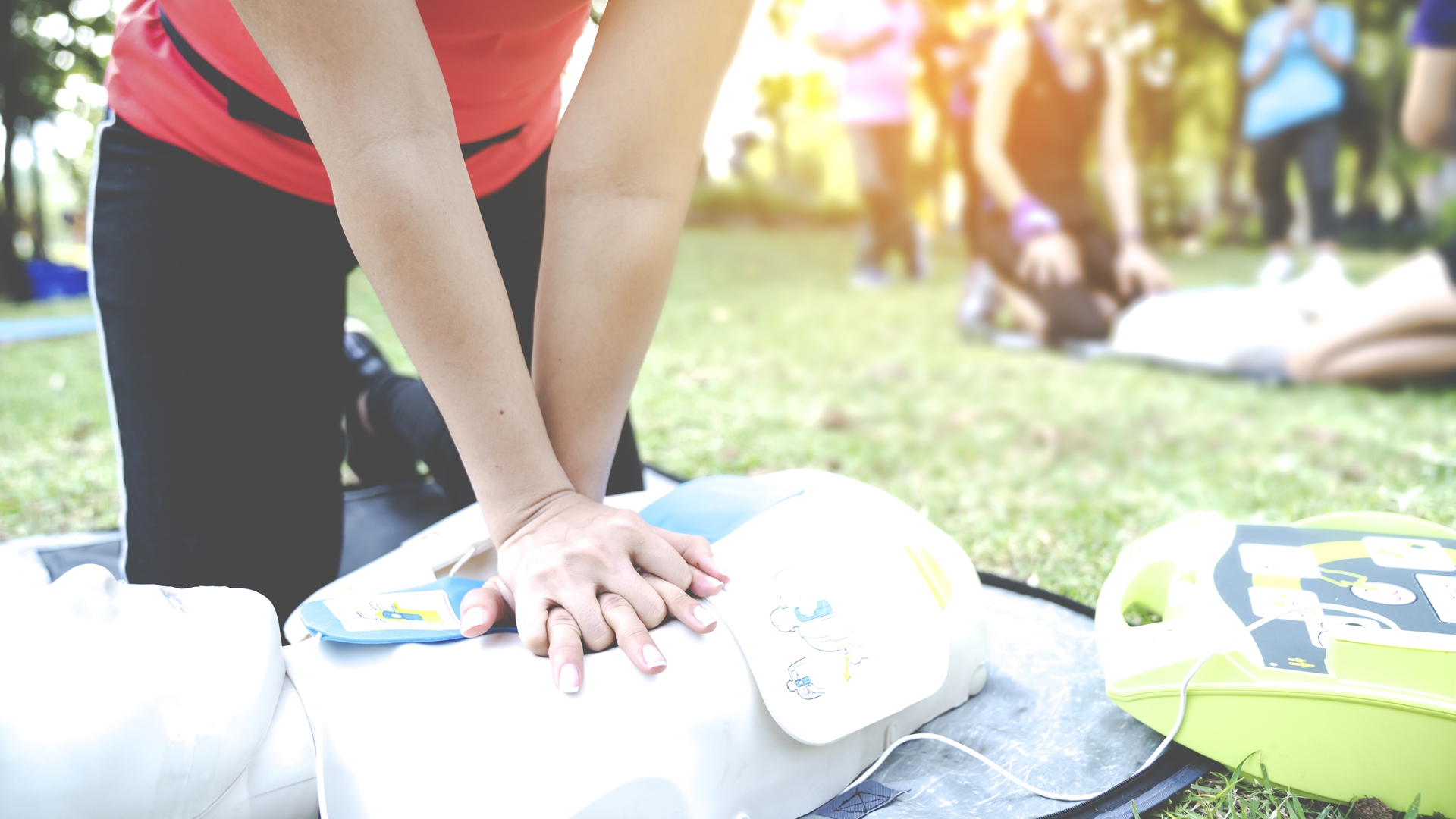A cardiac arrest is when the heart suddenly and unexpectedly stops beating. It can strike anyone, anywhere, anytime, at any age, often without warning. In Canada, an estimated 60,000 cardiac arrests occur outside of a hospital every year, and only one in 10 survives.
But with fast action – doing CPR and using an AED (automated external defibrillator) – the person’s chance of survival can double. AEDs are safe, easy-to-use, portable devices that will only deliver a shock to a person in cardiac arrest, if it’s needed to restart their heart.
Heart & Stroke, together with funding partners, has placed more than 15,000 AEDs in communities across Canada since 2010. Each year in Canada, we continue to train hundreds of thousands of people, from members of the general public to healthcare and emergency services professionals, in CPR and AED use. But more work needs to be done because too many lives are still being lost to cardiac arrest.
Driving long-lasting, higher-impact changes that save more lives, however, requires a focus on making bigger changes.
Restarting hearts
Because of its sudden, unexpected nature, cardiac arrest needs an emergency care response system that removes barriers for bystanders to respond quickly.
Lives can’t be saved if bystanders are reluctant to act, don’t know CPR, and if AEDs don’t work, can’t be found, or people are afraid to use them.
Bystanders may not act if they are:
- Unsure if CPR is the right thing to do
- Unconfident about their CPR skills
- Uncertain due to fear of doing harm, being ineffective or being sued
- Uneducated about how to do CPR
- Unwilling due to feeling inadequate or unqualified to help.
Changing systems to make AEDs available, accessible and rescue-ready will make the biggest, lasting impact. Currently, people who want to help save a life face many challenges:
- Unavailable or inaccessible: AEDS are not readily available where a bystander would expect to find them (in public places) or are inaccessible for public use (locked away).
- Unmaintained or uninspected: AEDs are not consistently maintained or inspected, so they may not work when needed.
- Unregistered: Many AEDs are not registered, or registry systems simply don’t exist, so locations aren’t known.
- Unlinked: Registries are not integrated with 9-1-1 response systems which would allow dispatchers to direct bystanders to their nearest AED.
- Unclear: Civil liability protection for individuals and AED owners or locations is not known or well understood.
- Unused and unknown: AEDs are not used due to lack of information and because of misinformation.
- Unaware: Many Canadians are unable to recognize a cardiac arrest and are unwilling to help because they don’t know what to do or are concerned about not being trained, getting sued, or hurting the person.
60,000
estimated number of out-of-hospital cardiac arrests each year in Canada.
9 in 10
out-of-hospital cardiac arrests result in death. Every minute without CPR or defibrillation (using an AED), the probability of survival declines by about 10%.
2 x
chance of a person in cardiac arrest surviving when a bystander performs CPR and uses an AED
How system changes can save lives
The best way to ensure large-scale, lasting changes that will be impactful is to remove barriers in the underlying systems.
Heart & Stroke is working with policy and decision-makers in governments at all levels to help shape pre-hospital emergency cardiac care response systems, and to encourage supportive legislative and regulatory frameworks. We’re also working hard to improve bystander awareness and response.
Making impactful system change requires a coordinated, collaborative and multi-stakeholder approach – including opinion leaders, resuscitation experts, and people who want to help. If we work together we can:
Recognize
Teach Canadians how to identify cardiac arrest
Respond
Educate people how to act quickly, and make AEDs available and accessible
Report
Improve system performance through better monitoring and surveillance
Our goals
- Doubling the cardiac arrest survival rate.
- Increasing bystander CPR and AED use.
- Improving outcomes for those impacted by cardiac arrest including survivors, lay responders and families.
What are we asking governments to do?
Heart & Stroke is advocating for government regulations and policies that mandate the placement of AEDs in strategic public places, as well as their registration and maintenance. Integrated regulations and policies directly impact the ability of bystanders to respond quickly and effectively to cardiac emergencies through the use of AEDs coupled with performing CPR.
Governments can:
- Develop and implement central registries
- Pass legislation, policies or guidelines to protect and strengthen public access to defibrillators
- Increase public awareness and education with help from Heart & Stroke
- Encourage quality improvement in emergency cardiac care response systems.
